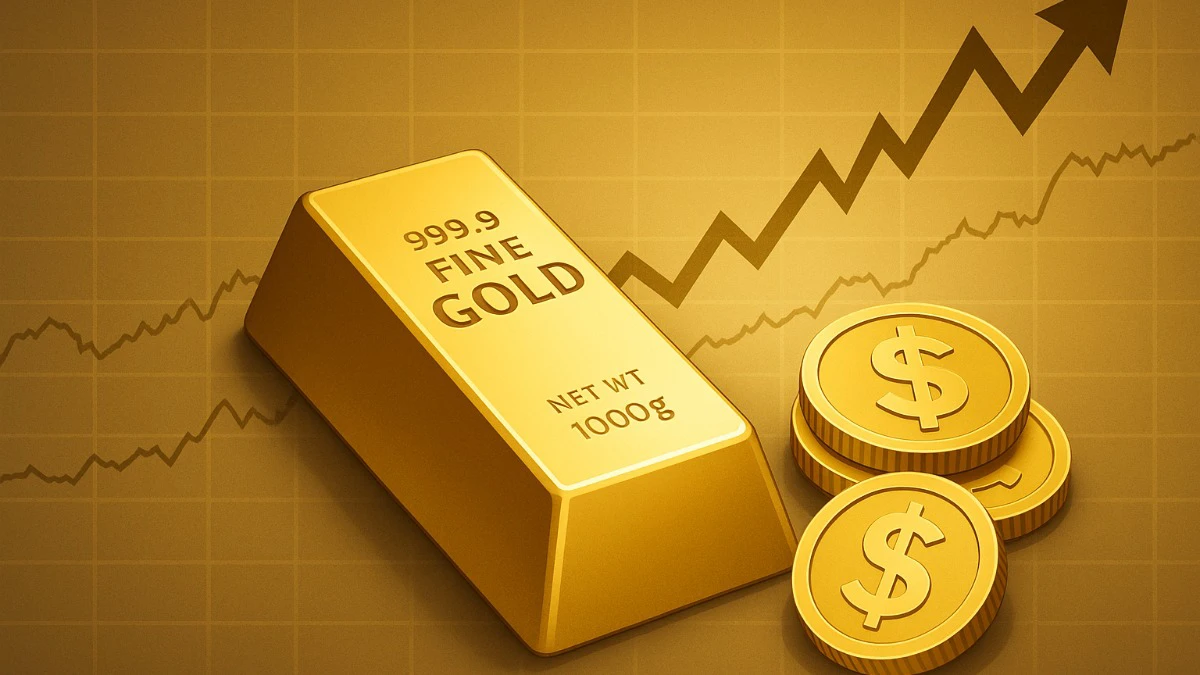Gold and silver prices wobbled on Wednesday following their sharpest one-day fall in over five years, as global equity and bond markets paused after recent rallies.
The selloff, which many analysts are calling a long-overdue correction, has rattled traders but hasn’t altered the broader bullish narrative surrounding precious metals.
Gold dipped below $4,100 an ounce in London trading, extending Tuesday’s 5% slump. Silver also saw a similar pullback, testing short-term support levels amid heavy profit-taking. The decline followed an extraordinary rally that had lifted gold to record highs, marking its strongest year since the 1979 oil crisis.
While there was no single catalyst behind the plunge, market observers say it reflects a mix of profit-booking, overextended positions, and broader uncertainty over global geopolitics and economic policy. As one analyst put it, “This isn’t a crisis-it’s altitude sickness after a steep climb.”
Correction after Diwali
Experts note that the pullback comes right after the Diwali festive season-a period typically associated with peak gold buying in India. According to Rajesh Rokde, chairman of the All India Gem and Jewellery Domestic Council, “Gold has seen a one-sided rise. In the past four months, it has gone from around $3,300 per ounce to $4,400 per ounce-a jump of nearly $1,100. A correction was inevitable.”
Analysts agree that this phase is more about consolidation than reversal. “After such a big rally, prices usually move sideways for a while,” said one market strategist. “Investors should remain patient; there’s no reason to expect a free fall.”
In India, gold prices have corrected from Rs 1.3 lakh per 10 grams to around Rs 1.25 lakh, while silver has slipped around 12% since Friday. Yet, both metals remain up dramatically year-to-date-silver by nearly 85% and gold by more than 70%.
Short-term pressure, long-term opportunity
Ajay Kedia, founder and director of Kedia Commodities, cautioned that near-term volatility could persist. “Gold may still face pressure depending on global developments-especially upcoming meetings between Donald Trump, China, and Russia. For now, prices are too volatile for fresh buying,” he said.
However, Kedia maintains that the long-term outlook remains positive. “Central banks are still buying aggressively. Even if gold dips another $50-$100, there’s very little scope for a deeper fall. Structural demand remains intact.”
Seasonal factors are also at play. Many traders tend to square off positions after Diwali, locking in profits before year-end holidays. “This cyclical pattern leads to temporary softening in prices every year,” Rokde explained.
Global markets
The metals pullback comes amid turbulence across global markets. Europe’s STOXX 600 slipped 0.3% after nearing record highs, while Asian stocks drifted lower. Analysts say “frothy” valuations in several asset classes-especially tech stocks-are facing short-term corrections. “Gold was massively stretched, massively overbought,” said Tony Sycamore, market analyst at IG. “We’re seeing small flash crashes across overheated markets.”
Bond markets, however, remained steady. European yields held firm, and 10-year U.S. Treasury yields stayed near a one-year low, signaling continued investor preference for safe assets. UK ‘gilts’ rose after data showed inflation holding steady, increasing the chances of a Bank of England rate cut in December.
Bullish for metals
Despite short-term corrections, the macroeconomic backdrop continues to favor gold and silver. Persistent geopolitical tensions, ongoing de-dollarisation trends, and central bank diversification are keeping long-term investors interested.
“Countries like China are converting their dollar reserves into gold,” Rokde said. “Gold is seen as a strategic hedge against currency risk and political instability.”
Meanwhile, Japan’s new Prime Minister Sanae Takaichi announced plans for a massive stimulus package exceeding 13.9 trillion yen ($92 billion), underscoring the global tilt toward loose fiscal policy-a scenario that historically benefits precious metals.
Outlook for investors
With the US Federal Reserve, European Central Bank, and Bank of Japan all meeting next week, traders are watching for cues on interest rates. Markets expect the Fed to cut rates by 25 basis points, which could lend renewed support to non-yielding assets like gold and silver. Market analysts believe the correction was overdue, but say gold remains a favored asset amid global uncertainty.
